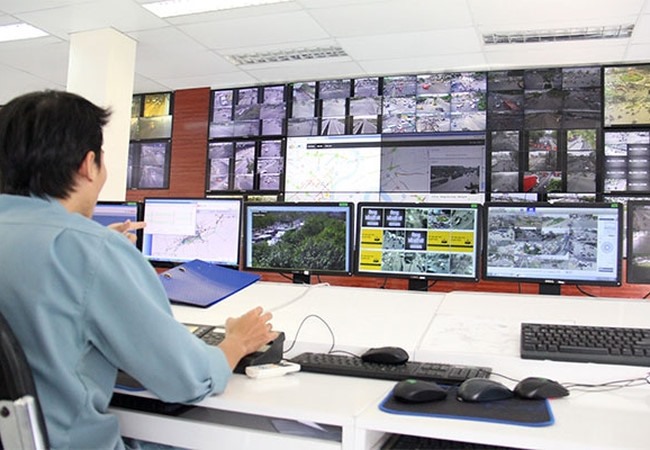 Economy
Economy

The Government needs to be aware of the pros and cons of the Internet of Things (IoT) and Smart Cities, establishing a strategic roadmap for the development to complement the national ICT roadmap.
 |
| The Government needs to be aware of the pros and cons of the Internet of Things (IoT) and Smart Cities, establishing a strategic roadmap for the development to complement the national ICT roadmap.— Photo VietTimes |
HÀ NỘI — The Government needs to be aware of the pros and cons of the Internet of Things (IoT) and Smart Cities, establishing a strategic roadmap for the development to complement the national ICT roadmap.
Trần Minh Tuấn, deputy director of the National Institute of Information and Communications Strategy under the Ministry of Information and Communication (MIC), said it was the right time for Việt Nam to think about developing IoT and Smart City applications in order to foster socio-economic development.
A recent survey conducted by Microsoft Việt Nam showed that Vietnamese youth expect IoT will have a major impact on their future.
“In Việt Nam, IoT solutions hold great promises in solving everyday life issues and improving citizens’ quality of life,” Tuan said.
He said the country had big potential for IoT and Smart City applications. Many application domains could potentially benefit from IoT and Smart City services.
The Vietnamese Government has been the driving force behind the country’s move into the age of digital economy.
The telecommunications infrastructure is now relatively developed, with more than 9 million broadband fixed internet subscribers at the end of 2016, according to the Việt Nam ICT White Book 2017.
Việt Nam has more than 43.92 million 3G and 4G subscribers, accounting for 47 per cent of its total population. About 36.5 million people are smartphone users.
“4G LTE plays a key role in IoT and Smart City infrastructure,” he added.
He suggested that the Government should plan carefully and realistically to prioritise people’s needs and not become misled by unrealistic prospects.
FPI IS director Phan Thanh Sơn said the Government should have a guiding framework and learn experience from global Smart Cities.
“Việt Nam has taken drastic measures to develop Smart City technology. However, if all localities in Việt Nam build Smart City themselves without planning or a roadmap, the rate of failure would be too high,” he said
He said Việt Nam should implement India’s step-by-step Smart City model. The Indian government mapped out 100 Smart Cities under its guidance and using various sources of capital.
Cities in India had to submit applications to be selected for funding and consultancy.
Incheon City in South Korea has been successful thanks to the establishment of a Smart City council with participation from relevant urban planning agencies.
He said the MIC has taken responsibility in studying and laying out a road map on Smart City in Việt Nam.
“The transition from 3G to 4G has been a considerable improvement, opening a new door for development of Smart Cities in the areas of smart transport, smart healthcare and smart buildings.”
Patrick Tsie, Marketing Director of Qualcomm Group said Việt Nam should take advantage of its available 4G infrastructure to develop Smart Cities.
“Each city has different characters of geography, climate, population, income and IT capacity. It is for this reason that the Government should not apply a common model for all cities,” he said. — VNS




